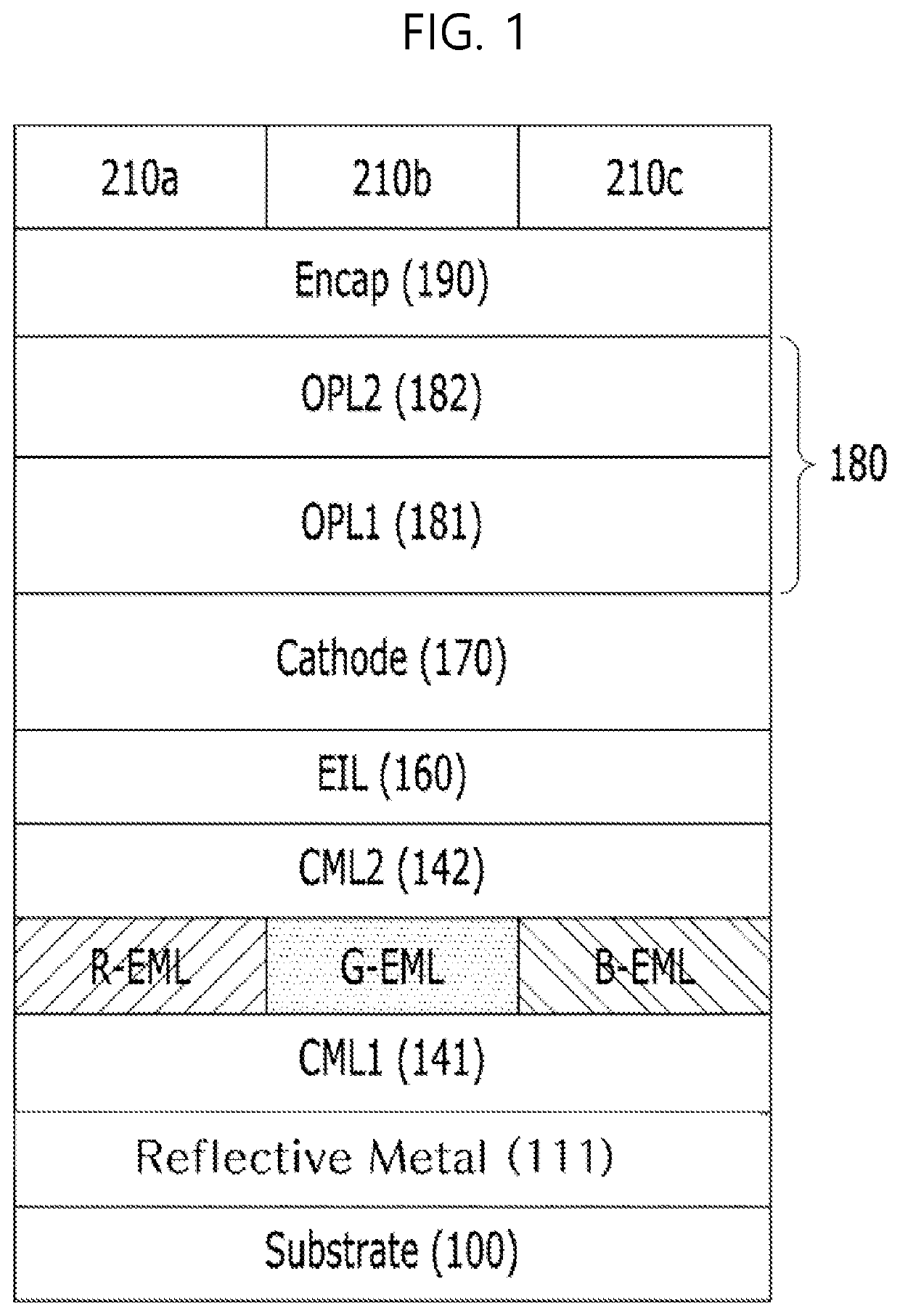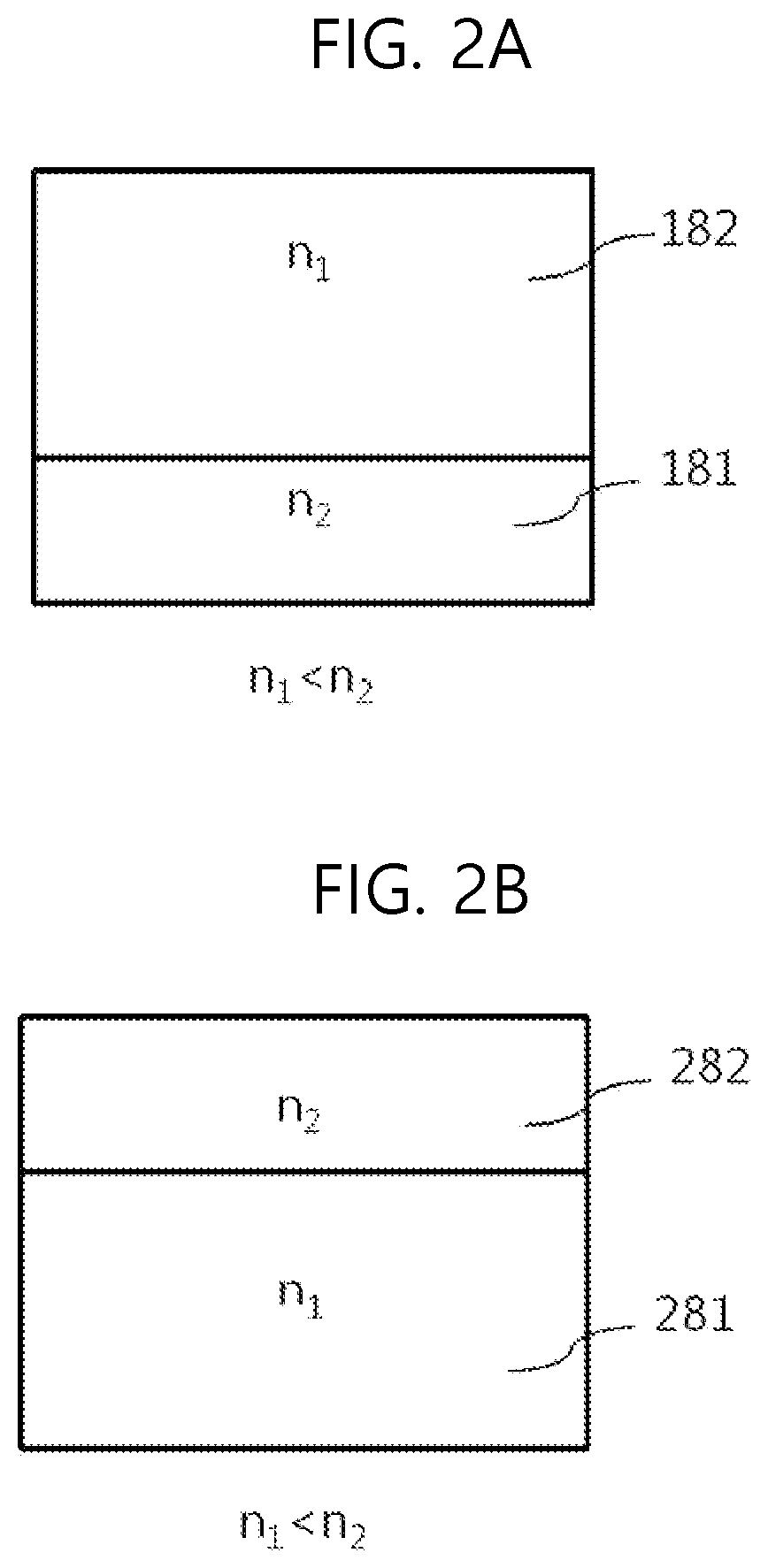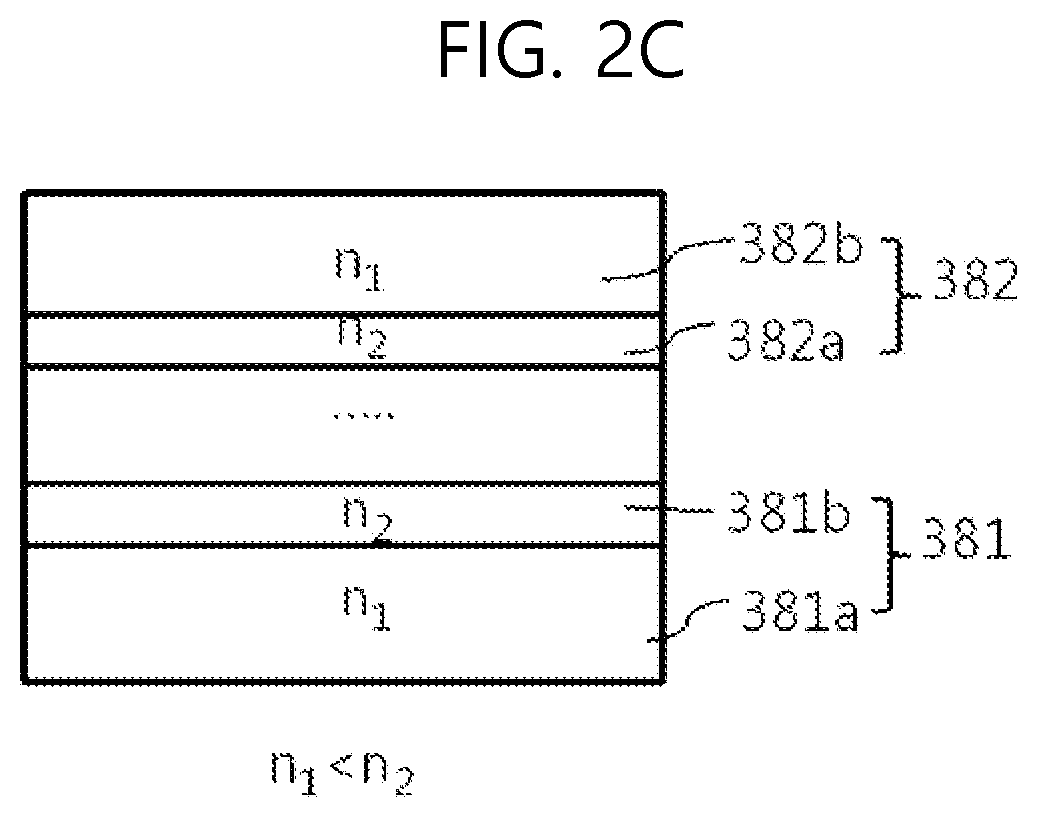Light-emitting display device
a technology of light-emitting display and display angle, which is applied in the direction of semiconductor devices, diodes, electrical devices, etc., can solve the problem of degrading the brightness of the display angle when the viewing angle is changed
- Summary
- Abstract
- Description
- Claims
- Application Information
AI Technical Summary
Benefits of technology
Problems solved by technology
Method used
Image
Examples
first embodiment
[0034]FIG. 1 is a cross-sectional view of a light-emitting display device according to the present disclosure. All the components of the display device according to all embodiments of the present invention are operatively coupled and configured.
[0035]As shown in FIG. 1, the light-emitting display device according to the first embodiment of the present disclosure can include a substrate 100 having a plurality of light-emitting units, light-emitting layers R-EML, G-EML, and B-EML included in a light-emitting unit, a reflective structure (or a reflective layer) 111 disposed between the light-emitting layers R-EML, G-EML, and B-EML and the substrate 100 in the light-emitting unit, a transmissive electrode (e.g., cathode) 170 positioned above the light-emitting layer over a plurality of pixels on the substrate, an optical compensation structure 180 that is in contact with the transmissive electrode 170 and has destructive interference characteristics, an encapsulation layer 190 on the op...
second embodiment
[0062]FIG. 3 is a cross-sectional view of a light-emitting display device according to the present disclosure. FIG. 4 is a cross-sectional view of a dielectric Bragg mirror of FIG. 3. FIGS. 5A and 5B are graphs showing the principle of a reflective mirror of a dielectric Bragg mirror and reflectivity thereof.
[0063]In the light-emitting display device of FIG. 3 according to the second embodiment of the present disclosure, a reflective structure 300 or a reflector of the light-emitting device can be configured separately from a first electrode 120.
[0064]Here, the reflective structure 300 can be formed as a metallic reflector but can also be formed of an insulating dielectric material, or a combination thereof.
[0065]When the reflective structure 300 is a metallic reflector, the reflective structure 300 can have a thickness of 100 nm or can satisfy a condition represented using Expression 3 below.
0.3<1-[(n-1)2+k2(n+1)2+k2]<0.03[Expression3]
Here, n is a refractive index and k is ...
third embodiment
[0070]FIG. 6 is a cross-sectional view of a light-emitting display device according to the present disclosure.
[0071]As shown in FIG. 6, the light-emitting display device according to the third embodiment of the present disclosure can be configured by applying different first to third reflective structures 310a, 310b, and 310c to a red light-emitting unit, a green light-emitting unit, and a blue light-emitting unit, respectively.
[0072]In this instance, the light-emitting display device can be designed using the same expression in such a way that the red light-emitting unit has wavelength peaks of 600 nm to 660 nm in FIGS. 3 and 5, the green light-emitting unit has wavelength peaks of 490 nm to 550 nm in FIGS. 3 and 5, and the blue light-emitting unit has wavelength peaks of 430 nm to 490 nm in FIGS. 3 and 5. However, because the wavelength peaks are different, the high refractive index layer and the low refractive index layer to be applied to the first to third reflective structures ...
PUM
 Login to View More
Login to View More Abstract
Description
Claims
Application Information
 Login to View More
Login to View More - R&D
- Intellectual Property
- Life Sciences
- Materials
- Tech Scout
- Unparalleled Data Quality
- Higher Quality Content
- 60% Fewer Hallucinations
Browse by: Latest US Patents, China's latest patents, Technical Efficacy Thesaurus, Application Domain, Technology Topic, Popular Technical Reports.
© 2025 PatSnap. All rights reserved.Legal|Privacy policy|Modern Slavery Act Transparency Statement|Sitemap|About US| Contact US: help@patsnap.com



